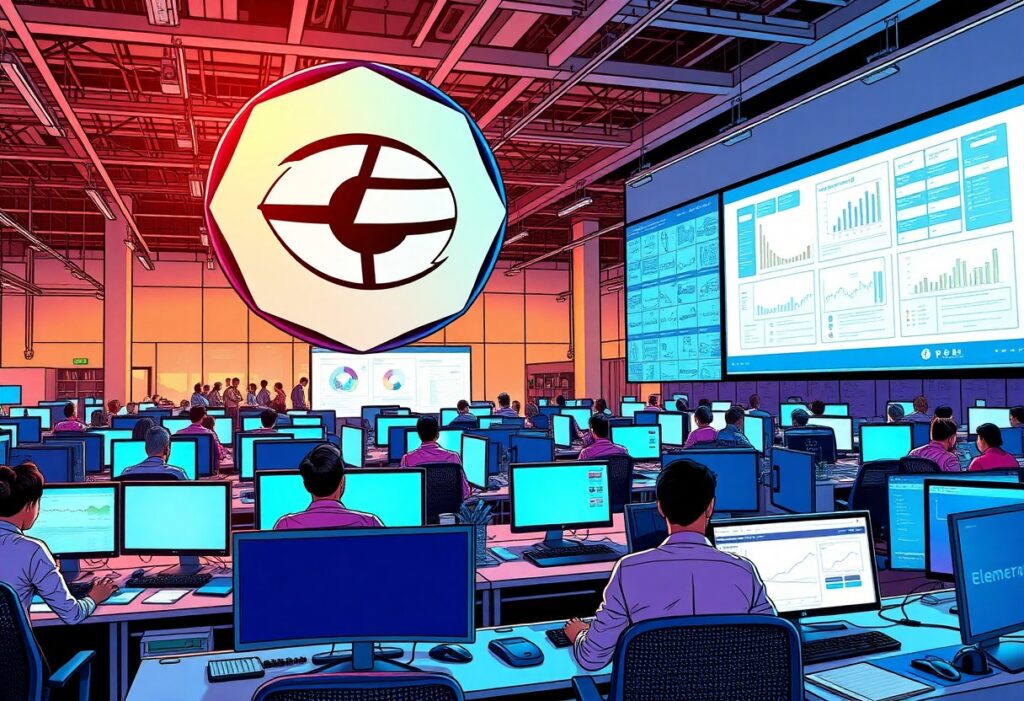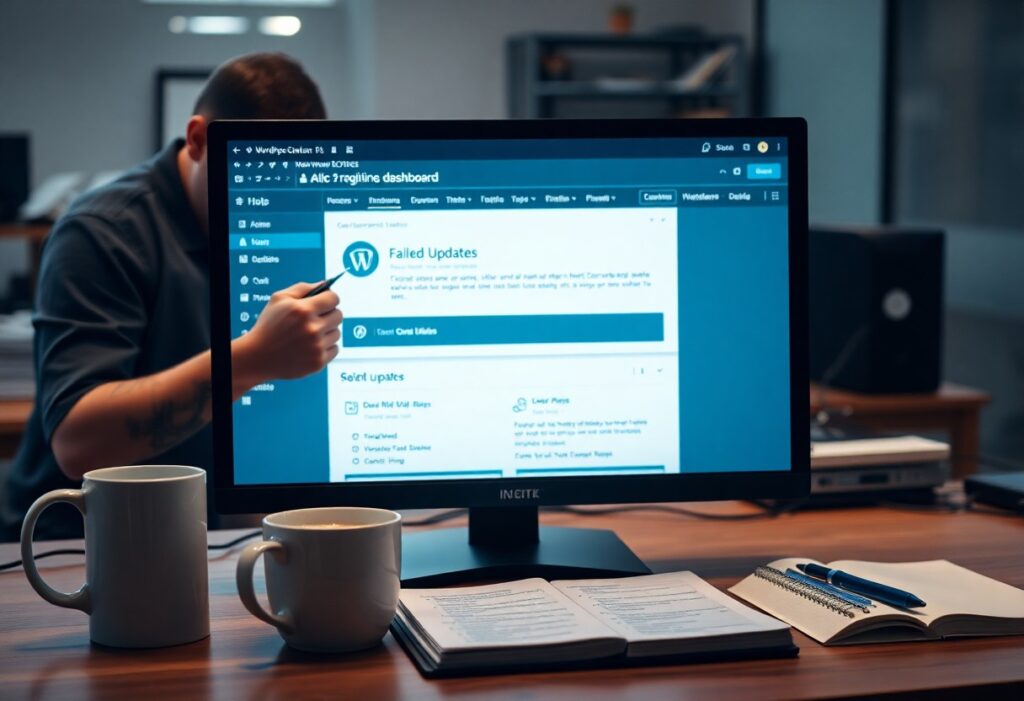Over time, mastering Elementor for large-scale enterprise projects can significantly enhance your web design capabilities. This guide will equip you with crucial techniques to optimize performance and ensure seamless integration with your existing systems. You’ll learn how to leverage advanced functionalities, manage resources effectively, and maintain site security throughout your deployment process. By following these steps, you can create visually stunning and highly efficient websites that meet the demands of your enterprise operations.
Unleashing Elementor’s Powers for Enterprises
The Unique Advantages of Elementor for Large Applications
Integrating Elementor into your large-scale enterprise projects delivers a rapid development advantage that few other page builders can rival. The user-friendly drag-and-drop interface allows your team to construct intricate layouts without the need for extensive coding knowledge, which can significantly shorten development timelines. This capability to visualize changes in real time fosters a collaborative environment, allowing designers and developers to work closely together to refine ideas without unnecessary back-and-forth. Plus, with a strong library of pre-designed templates and blocks, you can quickly implement advanced designs that align with your brand aesthetic while saving precious development hours.
Its flexibility is unmatched; Elementor’s architecture relies on a responsive framework, ensuring that your website functions flawlessly across various devices. For enterprises managing multiple brands or services, Elementor’s multi-site capabilities are particularly advantageous, enabling centralized control and consistent branding without sacrificing the tailor-made user experiences that clients or customers expect. Furthermore, the extensive integration potential with third-party plugins enhances its functionality, allowing you to leverage existing solutions to meet specific business needs seamlessly.
Key Features that Accelerate Enterprise Development
Elementor stands out due to its vast selection of features specifically aimed at expediting enterprise-level development. The extended capabilities, such as dynamic content, allow you to create isolated sections that change based on user interaction or data inputs, making it suitable for complex applications like e-commerce or membership sites. This dynamic approach not only enhances user experience but also leads to increased engagement and conversions.
- Theme Builder: Full control over headers, footers, and post templates.
- WooCommerce Integration: Advanced design options for online stores.
- Custom CSS & JS: Apply custom styling and scripts per element for ultimate design flexibility.
- Motion Effects: Add advanced animations and transitions to enrich user interaction.
- Form Builder: Create powerful forms for lead generation with various field options.
- Role Manager: Define user roles and capabilities for collaborative work without security breaches.
Enterprises can benefit massively from these features tailored to specific needs, helping you build highly functional, aesthetically pleasing websites rapidly. Learning how to leverage these features effectively can result in improved developer efficiency, reduced time to market, and ultimately, a stronger online presence. Perceiving the power of these aspects can lead your enterprise to achieve a competitive edge in your digital offerings.
- Global Widget: Reuse design elements across the site, making updates intuitive and quick.
- Template Library: Access to a vault of design templates that can be customized for different projects.
- A/B Testing: Optimize user experience by testing various layouts and functionalities.
- Third-Party Integrations: Connect with CRM, email marketing services, and more for a robust ecosystem.
- SEO Optimization: Built-in features to enhance your site’s visibility on search engines.
- Multi-site Functionality: Control multiple sites from a centralized interface for streamlined management.
By making the most of these key features, you set a solid foundation for scalable growth and agile development processes. This ability to adapt quickly not only enhances your team’s productivity but also keeps your enterprise responsive to market changes and customer needs. Perceiving this as a core component of your digital strategy will elevate your projects significantly.
Preparing Your Infrastructure for Elementor
Transforming your site with Elementor for large-scale projects requires careful infrastructure planning. The success of your deployment hinges not just on your choice of plugins and themes but significantly on your hosting specifications and security protocols. Each aspect plays a vital role in ensuring that your site performs seamlessly and securely under formidable traffic. Understanding these factors empowers you to make informed decisions that align with your business objectives and provide optimal user experiences.
Essential Hosting Specifications for Large-Scale Sites
High-performance hosting is a cornerstone of any large-scale website powered by Elementor. Aim for a managed WordPress hosting service that specializes in handling traffic spikes typical of enterprise-level sites. A reliable host will offer features such as content delivery networks (CDNs), caching mechanisms, and robust uptime guarantees of 99.9% or higher. These elements combine to deliver rapid load times, which can be the deciding factor for user retention and SEO rankings.
Furthermore, your hosting plan should accommodate your sites’ growth; look for options that allow for auto-scaling capabilities or substantial bandwidth limits. Enterprise projects often generate a significant amount of media content and website visitors, so don’t underestimate the need for adequate storage and high processing power. Opting for VPS or dedicated servers can provide the scalability and performance necessary for maintaining smooth functionalities.
Security Protocols to Safeguard Your Deployment
A solid security framework is non-negotiable in the modern digital landscape. As your site grows, so does its vulnerability. Implementing HTTPS, coupled with a reputable SSL certificate, ensures that data transmitted between your users and your site remains encrypted. Additionally, utilizing firewalls, regular security audits, and intrusion detection systems can significantly mitigate threats such as DDoS attacks and malware.
Regularly updating Elementor and all associated plugins is necessary, as vulnerabilities in outdated software can lead to significant breaches. Incorporating a web application firewall (WAF) further reinforces your defenses by filtering and monitoring HTTP traffic. Ensuring that you have secure backup protocols in place allows for quick recovery in the event of system failures or security incidents, fortifying your enterprise against potential disruptions.
Customizing Elementor for Corporate Needs
Meeting the unique demands of large corporations with Elementor involves more than just basic setup; it’s about creating an adaptable framework that aligns with your brand. This goes beyond aesthetic choices to include functional modifications that cater to your organizational workflow. Emphasizing your corporate identity requires custom options that reflect your company’s values, ensuring every page resonates with your audience while maintaining operational efficiency. Elementor’s robust customization capabilities enable you to create a cohesive design language that can easily be replicated across various departments and projects.
Creating Tailored Templates for Consistency
Establishing a library of tailored templates ensures consistency across your corporate website, maintaining a unified brand image while streamlining content creation. By creating custom page layouts that integrate your branding elements, you dramatically reduce the time needed to produce new pages. For example, if your marketing department needs a new landing page for a product launch, they can simply pull from the established template library, allowing for efficient reuse of design and structure. By using a combination of Elementor’s Theme Builder and reusable blocks, you can ensure that the design remains consistent while allowing for flexibility in the content.
Integrating Third-Party Tools and Plugins for Enhanced Functionality
The true power of Elementor particularly shines when paired with versatile third-party tools and plugins designed to expand its functionality. Whether you’re integrating a CRM for lead management or utilizing analytics tools for data-driven decision making, the right plugins can complement Elementor’s features and elevate your site’s performance. Popular integrations such as WooCommerce for e-commerce enterprises or Yoast SEO for optimizing your content can maximize user engagement and retention, ultimately contributing to better conversion rates. By carefully selecting plugins, you ensure that each tool enhances user experience without compromising site speed or security.
Focusing on specific integrations that align with your corporate goals is vital. For instance, incorporating advanced forms through plugins like WPForms can streamline user inquiries and feedback, creating a direct line of communication with your audience. Similarly, membership plugins like MemberPress can help you build a dedicated community around your brand offerings. These enhancements not only improve user functionality but also contribute to achieving KPIs, making your Elementor-powered site more valuable to your larger enterprise objectives.
Optimizing Performance: Speed and Scalability
Best Practices for Efficient Asset Management
Efficient asset management lays the groundwork for a high-performing Elementor site. Start by ensuring all images are optimized: using formats like WebP can significantly reduce file sizes without sacrificing quality. Additionally, leverage SVGs for icons and simple graphics to enhance load times. An effective strategy involves lazy loading for images and videos, which prevents unnecessary data from loading until users scroll down to them, leading to faster initial page loads. Group and minify CSS and JavaScript files to further improve speed, as this reduces the number of HTTP requests required to load your site.
Utilizing a systematic approach to your asset management also includes regularly auditing plugins and themes. Deactivate and remove any elements that are not actively in use. Each additional plugin can add weight to your site, potentially impacting the load speed negatively. Consider opting for a lightweight theme and only choosing Elementor add-ons that serve a specific purpose, ensuring that every piece contributes to your site’s overall performance.
Leveraging Content Delivery Networks (CDNs)
A Content Delivery Network (CDN) enhances your site’s load speed and availability significantly. By caching your content and distributing it across various servers worldwide, CDNs ensure that users access data from the nearest geographical location, reducing latencies. For global enterprises, this means delivering a seamless experience for users regardless of their location. Many CDNs also optimize images and compress files on the fly, which further aids in speeding up your site’s performance.
Incorporating a CDN is relatively straightforward. Numerous services, such as Cloudflare or Amazon CloudFront, can be easily integrated with Elementor. Upon activation, most CDNs provide a dashboard for fine-tuning settings based on your site’s requirements. Regularly monitoring analytics from your CDN can also yield insights into traffic patterns and help in scaling resources effectively during peak times.
Collaboration and Workflow Management
Streamlining Team Processes in Elementor Projects
Establishing a clear communication protocol is necessary to streamline team processes when working on Elementor projects. Leverage tools such as Trello or Asana to track tasks and deadlines, ensuring everyone stays aligned with project goals. Utilizing shared documentation platforms like Google Docs can foster collaboration during the content creation phase, allowing designers and writers to work simultaneously on the same elements without version conflicts. By doing so, you enhance productivity and minimize misunderstandings that could derail your project’s timeline.
Consider creating dedicated channels in platforms like Slack for specific project discussions. This helps in consolidating relevant information and speeds up decision-making, as team members can easily access past conversations and updates. Implementing regular check-ins or sprint reviews will also keep the momentum going, allowing you to address issues proactively and adjust workflows as necessary.
Version Control: Best Strategies for Team Environments
Implementing version control systems is non-negotiable for maintaining the integrity of your Elementor projects within a team. Utilizing tools such as Git can help manage changes from multiple team members efficiently. Each team member can work independently on their branches, merging changes into the main project only after thorough review. This method not only safeguards your original files but also enables rolling back to previous versions if something goes wrong.
Train your team on best practices in using version control effectively, including the importance of clear commit messages that detail what changes have been made. Establish a branching strategy, such as Git Flow, where new features or bug fixes have dedicated branches. This structured approach to versioning helps your team mitigate conflicts and ensures a smoother integration of changes, ultimately delivering a more cohesive final product.
In environments using Elementor, ensuring an efficient version control setup can minimize time spent troubleshooting issues stemming from conflicting changes. Incorporating automated tools like GitHub Actions for testing and deployment can further enhance your workflow. These automated systems facilitate continuous integration/continuous deployment (CI/CD), which fosters a more agile development cycle.
To wrap up
Drawing together all the insights shared, deploying Elementor for large-scale enterprise projects requires a structured approach that aligns with your organizational goals and technical requirements. As you scale your project, consider establishing a robust framework that includes thorough planning, consistent design guidelines, and a collaborative environment for your development team. Utilizing Elementor’s features effectively not only enhances productivity but also allows you to maintain a high-quality user experience across your sites. Evaluating various add-ons and integrations can further enrich the functionality of your pages, making them more suited to your business needs.
Moreover, staying informed about updates and best practices ensures that you are making the most of Elementor’s capabilities. As you move forward, investing time in training your teams and keeping open lines of communication can lead to better outcomes in large-scale implementations. Embrace the flexibility and power that Elementor offers, and you will find it to be a valuable asset in your enterprise toolkit, helping you create visually stunning, high-performing websites that serve your objectives effectively.
FAQ
Q: What are the important steps to take when preparing to deploy Elementor for large-scale enterprise projects?
A: When preparing to deploy Elementor for large-scale enterprise projects, there are several important steps to consider:
1. Assess Requirements: Before deployment, evaluate the project requirements, including functionality, user roles, and any specific design needs.
2. Choose the Right Hosting Environment: Select a hosting plan that can handle the traffic and performance demands of a large-scale site. Look for managed WordPress hosting that offers scalability and robust support.
3. Implement a Staging Environment: Set up a staging site to test Elementor configurations, themes, and plugins. This is crucial for ensuring that everything works smoothly before going live.
4. Plan for Version Control: Use version control with tools like Git to manage changes and collaborate with team members effectively.
5. Optimize Performance Considerations: Consider using caching plugins and implementing best practices for image and file optimization to enhance site speed and performance.
Q: How do I ensure compatibility of Elementor with other plugins and themes for an enterprise-level website?
A: Ensuring compatibility with other plugins and themes is vital for the smooth operation of enterprise websites using Elementor. Here are steps to help achieve this:
1. Conduct Compatibility Tests: Before deploying, conduct thorough compatibility testing with all plugins and themes in a staging environment to identify any conflicts.
2. Stick to Established Plugins: Use well-reviewed and regularly updated plugins that have a history of successful integration with Elementor. Check support forums for any reported issues.
3. Regular Updates: Keep Elementor, the theme, and all plugins updated to their latest versions to take advantage of compatibility fixes and new features.
4. Fallback Solutions: Be prepared with alternative solutions for any plugins that may conflict. Having identified alternatives ensures continuous functionality in case of issues.
5. Engage in Community Discussions: Connect with the Elementor community to gain insights on known compatibility challenges and solutions that other users have experienced.
Q: What are best practices for managing user roles and permissions when deploying Elementor on a large-scale enterprise site?
A: Managing user roles and permissions effectively is critical in large-scale enterprise deployments of Elementor. Here are best practices to follow:
1. Define User Roles Clearly: Before granting access, define roles (e.g., Admin, Editor, Author) based on the responsibilities of team members. Ensure there is a clear understanding of who can edit, publish, or override content.
2. Leverage Elementor’s Role Manager: Use Elementor’s role manager feature to control which user roles have access to specific features, ensuring that users only see what they need for their tasks.
3. Implement Custom Roles if Needed: If the default roles don’t meet your requirements, consider creating custom user roles tailored to the specific needs of your project.
4. Educate Team Members: Provide training for users on how to use Elementor effectively, focusing on the functionalities available to their roles. This can help minimize mistakes and ensure proper usage.
5. Regularly Review User Access: Periodically review user roles and access levels to ensure that only necessary personnel have editing rights. Remove or adjust access as team members change or if projects evolve.
Need expert help managing your WordPress site?
If "How To Deploy Elementor for Large-Scale Enterprise Projects (Critical WP)" was useful, imagine your site with expert care — speed, security, uptime, and updates handled for you.




